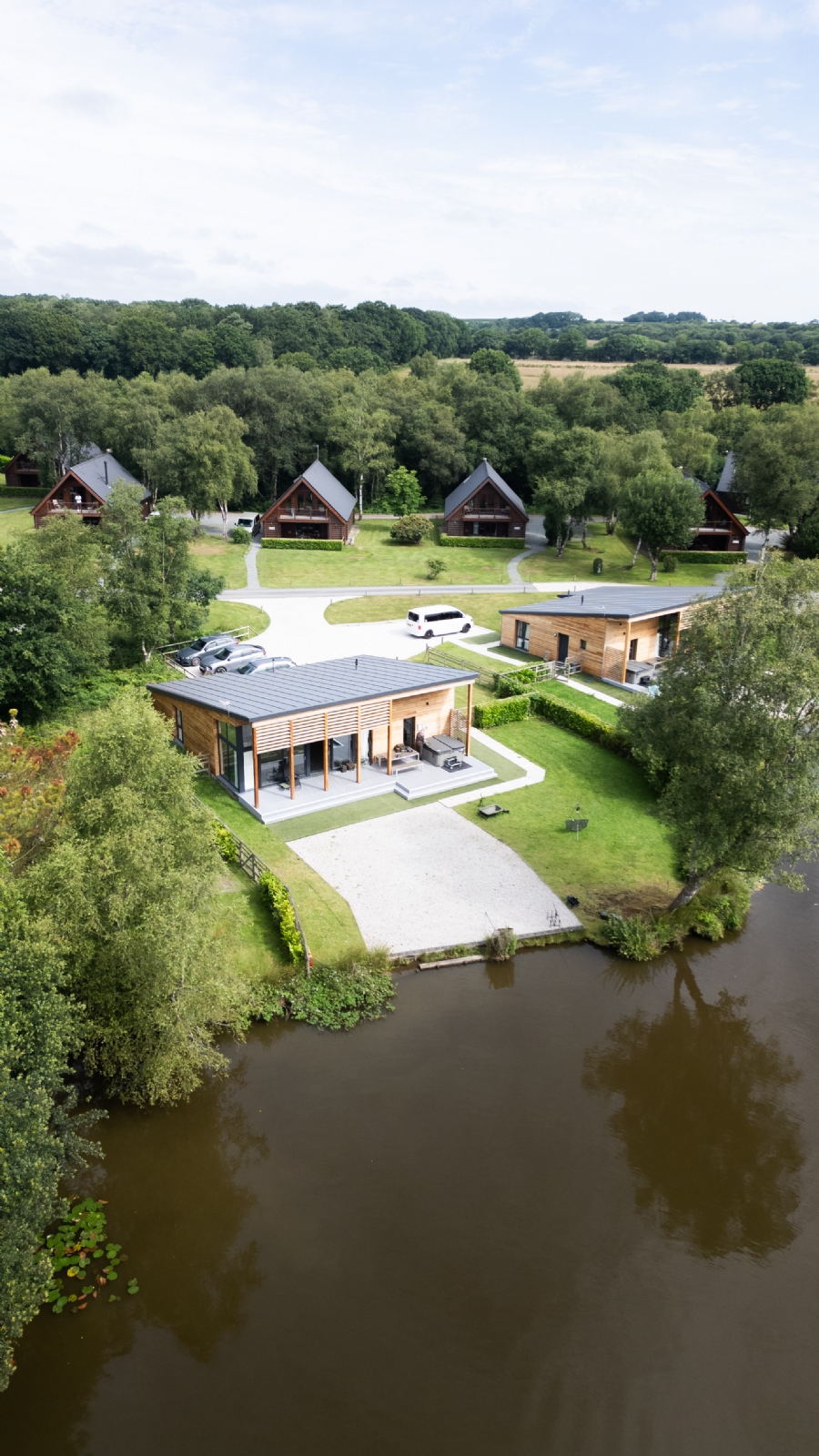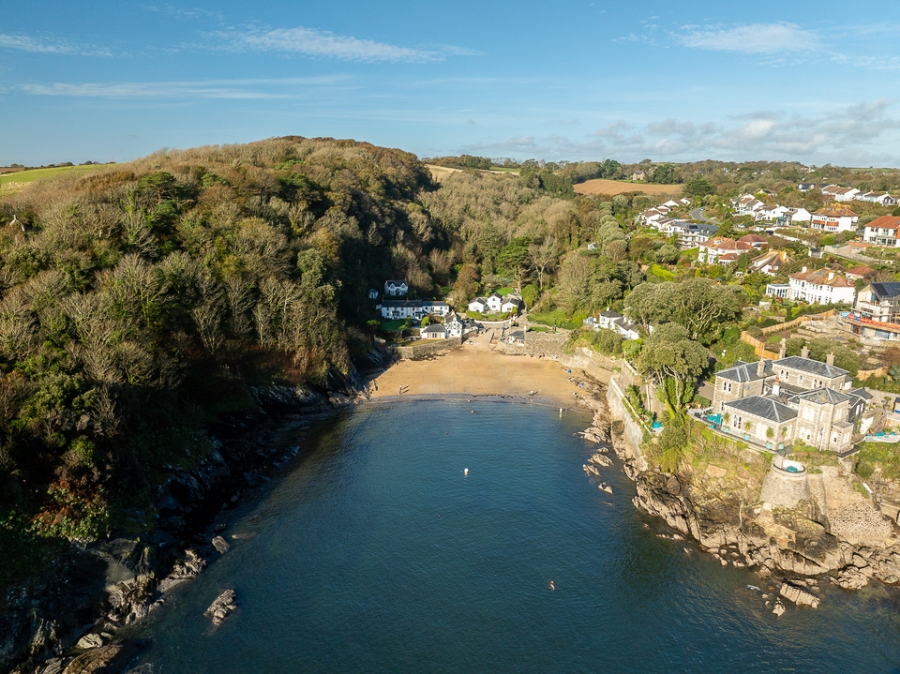CHARTEROAK (Stonerush Ltd)
1 Saxon House
Saxon Way West
Corby
NN18 9EZ
Email: info@charteroak.co.uk
Sales: 0800 117 0883
Customer service: 01503 220 220
Cornwall has always been a popular location for holidays and no wonder with all the beauty and history it has to offer, there is something for all and it’s no surprise visitors return time and time again, there is so much to discover.
In fact, Cornwall is a truly magical place steeped in mystery with historical features surrounding you so you can easily become lost in all its magic. We’ve looked at the historical attractions you can visit locally to our lodges when you come to stay.
Carnglaze Caverns
Carnglaze has three underground caverns reaching over 100 meters into a wooded hillside between Liskeard and Bodmin.
These three although artificial caves are still something to behold with wonderful acoustics for live bands to play, they were also used to keep the Royal Navy's rum ration safe and secure during the Second World War.
Tours delve approximately 150 metres into the valley hillside and reach a point some 60 metres below the earth's surface. The first chamber contains a collection of minerals mined in the region, as well as several bat roosts. Reaching the lower two caverns, including the underground lake, involves a short descent down a flight of stairs.
Open all year round with regular tours – if you’re not the adventurous type, you can choose to stay on solid ground and admire nature above!
Golitha Falls
A wonderful walk where you get to witness a series of spectacular cascades and waterfalls along a section of the river Fowey as it makes its way through the ancient oak woodland of Draynes Wood.
The scenery varies as you go through the woods, witnessing fast flowing water and dramatic falls. It’s a wonderful place to relax and just listen to nature at its best.
Trethevy Quoit
Located high on the moors, overlooking a meeting of streams near St Cleer this impressive quoit is known locally as the ‘giant’s house’ and is widely considered to be the best-preserved quoit in Cornwall, and among the best in the UK.
Erected in the early Neolithic period (c3500BC), and originally partially covered by a mound, Trethevy Quoit is unusual because not only does it have 6 supporting stones forming its internal chamber, but it was also constructed with an antechamber (although only one of the two original stones remains).
However, the two features that make this portal dolmen particularly interesting are the circular hole cut in the higher most corner of the capstone and another larger hole seemingly cut into the top of two of the upright stones. Speculation has informed us that the small round hole could have been used for astronomy, and that the side gap might have been used as a supplementary entrance for corpses in times of funereal ritual, though it remains a mystery.
King Donierts Stone
Doniert's Stone is thought to be the remains of a royal grave. The stone is inscribed with the Latin "DONIERT ROGAUIT PRO ANIMA" who is believed to be a 9th century Cornish King. The bones of a horse were excavated from beneath the stones at one time.
The Cheesewring
This has become one of the most iconic sites in Cornwall. Seven slabs of rock make up the thirty-two feet high Cheesewring.
Local legend says that the Cheesewring is the result of a contest between a man and a giant. When Christianity had just been introduced to the British Islands, the giants who lived at the top of the mountains were not happy about it. The saints had invaded their land and were declaring their wells as sacred. One of the larger giants, Uther, was given the task of ridding their land of the saints and proposed a rock throwing contest. If Uther won, the saints would leave Cornwall. If Saint Tue won, then the giants would convert to Christianity. Uther took his turn first and easily threw a small rock to the top of nearby Stowe's Hill. Tue prayed for assistance and picking up a huge slab found it was very light. One after the other, they threw their rocks, stacking them up in perfect piles. When the score was twelve stones each, Uther threw a thirteenth stone, but it rolled down the hill. Tue picked up this fallen stone, and as he lifted it, an angel appeared to carry it to the top of the pile of rocks. Seeing this, Uther conceded, and most of the giants decided to follow Christianity after that.
Dozmary Pool
Set in the heart of the magical mystical Bodmin moor lies this pool steeped in mystery, myth, and legend. The atmosphere is undoubtedly a little spooky. Even at the height of summer, the air can be cool and the mist come out of nowhere. It's not even known how the tarn got its name, though one local legend suggests the name comes from 'Dozy Mary', a tragic murder victim nearby.
The pool has strong associations with 'Excalibur', the mythical sword belonging to King Arthur. In some legends, the Lady of the Lake herself gives Arthur the weapon. The pool is about a mile in circumference and lies in what's now known as the Cornwall Area of Outstanding Natural Beauty.
The Longstone
Its formal name of "The Longstone (Cross)" is an apt description of what this ancient structure is. Commonly known as "Long Tom" this stick of granite stands more than 2.5 metres (9 feet) high. Taking the form of a deliberately shaped standing stone, the top quarter is marked with a carved Greek cross.
Long Tom is thought to be at least 600 years old, but it may be significantly older and predate the Norman conquest of 1066. One of the best-preserved wayside crosses in the United Kingdom, it is also rare in the fact it appears to be standing in its original location at the south-eastern extreme of Bodmin Moor on an ancient bridleway or footpath.
The Hurlers
High on Bodmin Moor there is not one but three stone circles - the Hurlers. The name derives from morally loaded folk tale of people petrified for failing to observe the Lord’s Day, in this case local men playing the Celtic sport of hurling.
However, it is likely that this Bronze Age site was of much more significance, being used for ritual and ceremony, in other words activities deemed Pagan and unacceptable to early Christians hence the cautionary tale. The location of the Hurlers is of relevance as they lie near the convergence of two rivers, conveniently placing them where travellers and traders would have met.
Duloe Stone Circle
Duloe stone circle is unique in Cornwall owing to its diminutive diameter (under 12m) and the size of its unusual white stones.
This 'circle' was first recorded in the C14th, but only fully recognised as an important ancient site in the early C19th, prompting the removal of a more modern hedge which crossed it and restoration which unearthed a ribbon-handled funereal urn.
Some believe that there was once a cairn, or stone mound, within the circle implying that it would have had ceremonial relevance when built in the Bronze Age. The existence of the urn, which contained human remains, backs this up. One could also say that the 8 stones roughly represent the points of the compass, thus tying it to astronomical observation and ritual.
There you have it, which will you visit first? Be sure to pack your walking boots and a picnic as wherever you choose, you are sure to have a wonderful time taking yourself back in time and really wondering who has walked those steps in years before.
Enjoy the magic!

Escape to Devon & Cornwall this autumn & winter - Whilst saving 15% off your stay
Beat the crowds, find your peace, enjoy Devon & Cornwall for less this autumn & winter

Understanding Charteroak's Guaranteed Rental Agreement
Your path to stress free lodge ownership

Hidden Gem beaches near Stonerush Lakes you'll wish you found sooner
These are the quiet coves locals keep to themselves, and that guests in our holiday lodges in Cornwall can dis...